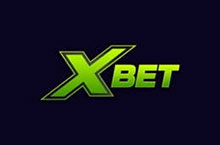One of the tempting aspects of placing bets is that you can make a living out of a hobby. Of course, a punter must know what exactly they’re doing, must understand how bets work, which strategy to use and how the bookmakers profit. It is not an easy task, but it can be done. While bettors use tactics and techniques, bookmakers have some of their own, too. There are a few reasons why bookies are at an advantage no matter what the outcomes are.
You probably have heard the saying that there is always one who wins and this is the bookmaker. In order to be a successful punter, you must learn how the bookies work. Of course, bookmakers profit from losing bets, but not only. Once you have fully understood the tactics and strategies of the bookies, you would be able to beat them.
Find the best bookmakers here
Basic Purpose of Bookmaking
The main purpose of bookmaking is pretty obvious and straightforward. Bookies take money every time a punter wins and every time one loses. Therefore, their basic purpose is to generate profits to pay out winning bets. So the bookmakers’ “art” is to make sure that this will happen.
Betting platforms cannot control sports events’ outcomes, but surely can manage how much you win or lose on every result. Bookmakers sets the betting odds for every wager, which means that they will always generate profits.
Charging Vig
The basic technique that bookmakers use to guarantee a profit is the inclusion of the vig. The vig, or vigorish, is also known as margin, juice, or the overround. It is a commission that you pay in order to place a bet. The best way to understand how the vig works in to explain it with a coin toss example. When you toss a coin, there are two possible results – a 50% chance of tails and a 50% possibility of heads. If a bookie offered true odds on the coin toss, they would have offered even money, which is in decimal odds 2.00 (+100 in US odds and 1/1 in fractional odds). Therefore, a winning bet of £10 at 2.00 odds will return £20 (the initial stake and the profit).
So if 100 punters bet on the coin toss. Half of them will bet on heads, while the other half will be in favour of tails – 50 x £10 = £500 and the same amount of money will be received from the other 50 punters. As a result, the bookmaker will take £1000, but will pay out £1000 (50 x £20 for tails and 50x £20 for heads). This scenario obviously would not be profitable for the bookmakers at all.
This is the main reason why bookmakers build up an overround to odds. This is a guarantee that they will still make money no matter what the outcome of an event is. When a result is even, as in the example with the coin toss, odds of 1.9091 (10/11 in fractional odds and -110 in moneyline) are most commonly used.
Let’s continue with the example mentioned above. The odds on tails and heads would be 1.9091, meaning that a successful bet of £10 would earn you a £19.09 profit (£9.09 profit plus the original stake). This time the change in the betting odds would make a great difference since the bookmaker is making a sure profit on every wager. The total sum that they would pay out is £954.5 (50 payouts x £19.09 for tails and and the same amount for heads), not £1000. They achieved a £45.50 profit from margins. In this case, the vigorish is equal to around 4.5% of the total amount of the received wagers.
The given example is very simple, but it clearly illustrates how bookmakers manage to set the odds and therefore they always make a profit. But the situation is more complicated when it comes to sports events, because there are more than two possible outcomes. Therefore, bookmakers are not going to take in the exact amount of the possible outcomes.
But bookmakers do not only charge a commission. They have other techniques that ensure them consistent profits.
Odds’ Role
As we are talking about the other tactics that bookmakers use in order to ensure their profit, we must add the role of the odds compilers, i.e. the setting of the betting odds, also known as pricing the market. Odds compilers are also called traders and their role is of great importance. The set odds determine how much the bookmaker is likely to receive and what amount of money you are likely to win.
There are a few aspects that are involved in pricing the markets for a sports event. The main purpose is to make sure that the betting odds reflect on how the outcome may turn out. The other goal is to ensure that there is a profit regardless of the ending of a game. Determining the possible outcomes is mainly based on statistics but knowledge of a certain sport must be applied, as well.
In order to price a market, compilers need to have solid knowledge on sports, therefore they specialise in one or two sports. Moreover, they must fully understand various statistics and mathematical principles.
How could a market for a tennis game could be priced up? Let’s say that Andy Murray is playing against Novak Djokovic. In this case the tennis players have similar abilities, thus the compilers need to take into consideration a couple of factors. For example, they would look Murray’s and Djokovic’s ability on the surface or see the results from previous meetings.
So based on such factors, they may determine that Djokovic has around a 60% probability to win. The odds would be 1.67 for Djokovic and 2.50 for Murray.
One should not forget that compilers have targets. Let’s say that in this case the compiler needs a 5% margin, so the odds would be reduced by 5% – Djokovic would be at 1.69 odds and Murray at 2.38 odds.
The margin can be calculated easily. You must add the reciprocal of the betting odds for every possible outcome and simply convert the result into a percentage. In the tennis example the outcomes are two and the calculation would look like this: margin = (1/1.59) + (1/2.38) = 1.05 = 105%.
But many mistakes may be made, so the work of the bookmakers do not end here. The balanced book is next.
Balanced Book’s Role
The role of the balanced book is very simple – it ensures the bookmaker will get the same sum of money no mater what the outcome is. It balances the losses and the winnings and it is what odds compilers aim for.
For example, if £6,000 are wagered on Djokovic and £4,000 on Murray, the bookmaker will take £10,000. If Djokovic wins, it will pay out £9,540 and win $460, and if Murray wins, the bookie will pay out £9,520 and win £480.
It is very important that the book is balanced, otherwise the bookmaker will lose money. This is why betting odds fluctuate over time. The odds are adjusted to make sure the book is balanced and that they will collect a profit. There is no perfectly balanced book, but the main purpose is to get as closely as possible.
Sometimes, compilers may want to have an imbalanced book. For example, if they are too confident that Djokovic will win, they might push the betting odds out on Murray in order to get more wagering on that side of the book.
Summary
Now you know why bookmakers always win and have advantage over punters. However, if you follow them closely, you would be able to see their weak spots and benefit from them.
Their advantage is not only based on mathematics and vigs. Their winnings come mainly from the big number of losing bets people place. In order to win, you need to place a good bet. You must acquire skills and knowledge to identify the betting chances which bring forward good value. Punters can beat the bookmaker, all they need is hard work and some luck.




 Premier League
Premier League La Liga
La Liga Bundesliga
Bundesliga Serie A
Serie A Ligue 1
Ligue 1 UCL
UCL



